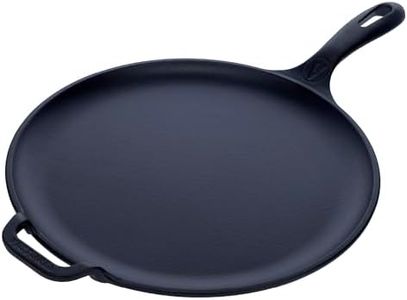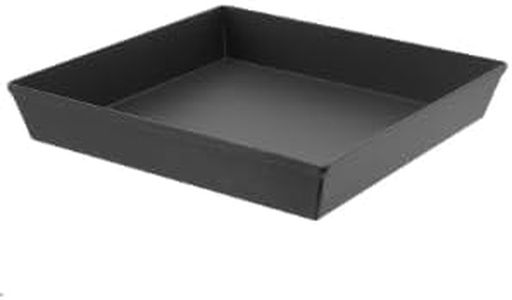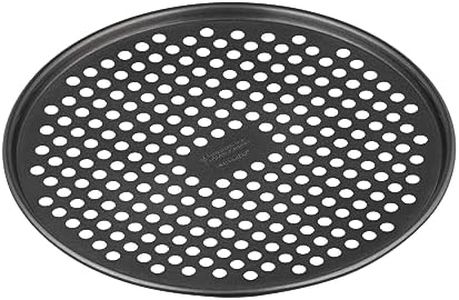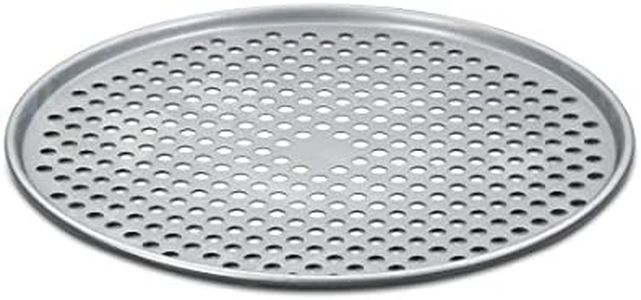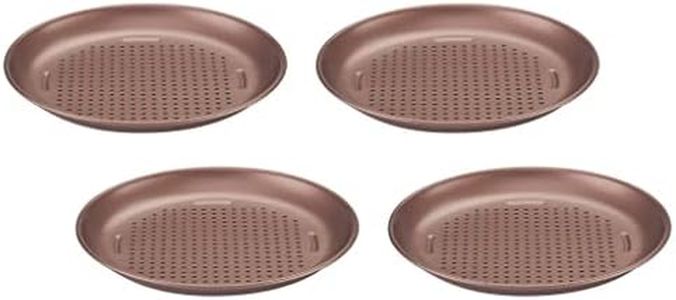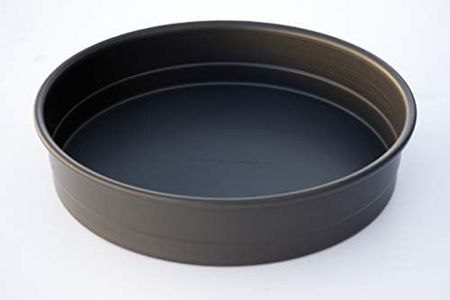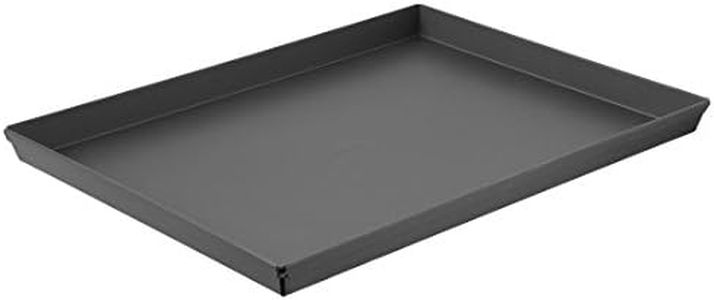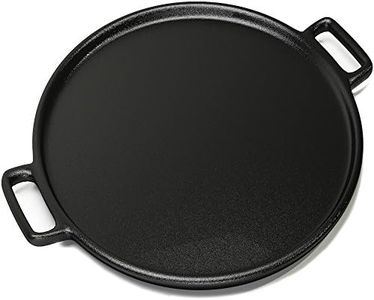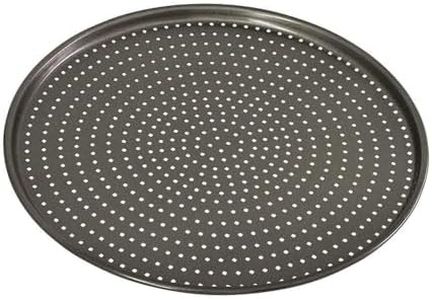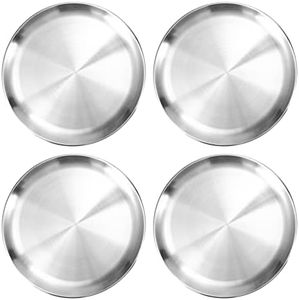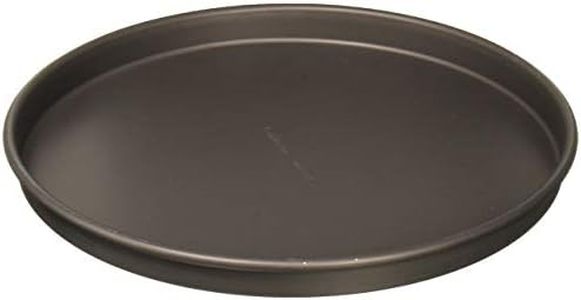We Use CookiesWe use cookies to enhance the security, performance,
functionality and for analytical and promotional activities. By continuing to browse this site you
are agreeing to our privacy policy
10 Best Pizza Pans
From leading brands and best sellers available on the web.By clicking on a link to a third party's website, log data is shared with that third party.
Buying Guide for the Best Pizza Pans
Choosing the right pizza pan can really elevate your homemade pizza experience. There are several types and features to consider, and each one affects your pizza’s texture, crispiness, and ease of cooking. When picking a pizza pan, think about the type of pizza you enjoy most—be it thin crust, deep dish, or something in between. Also consider what kind of oven you have and how often you plan to bake pizza, as this can influence the material and size that will work best for you.MaterialThe material of a pizza pan directly influences how your pizza cooks and how crispy your crust gets. Common materials include aluminum, steel, cast iron, and even non-stick coatings. Aluminum pans heat up quickly and are lightweight, creating a nicely browned crust, while steel pans are durable and distribute heat evenly, making them ideal for thicker or deep-dish pizzas. Cast iron retains heat very well and can create an exceptional crispiness, but it's heavier and needs seasoning to prevent rust. If you prefer easy cleanup, non-stick coated pans might be appealing, but they generally don't give as crisp a bottom. To choose the right one, consider whether you prefer simplicity and quick cooking (aluminum or non-stick), or if you're after that perfectly crispy, restaurant-style crust (steel or cast iron).
Pan ShapePizza pans mainly come in round, square, or rectangular shapes. The classic round pan is great for traditional pizzas, while rectangular or square pans are ideal for Sicilian or Detroit-style pizzas with thicker, fluffier crusts. If you love a specific type of pizza or want to maximize the number of slices, the shape can play a big role. Think about the style you’ll make most and pick the pan that matches it.
Surface Type (Perforated vs. Solid)The surface of the pan—perforated (with holes) or solid—has a significant effect on how your pizza cooks. Perforated pans allow more heat and air to reach the bottom of the pizza, making the crust crispier and reducing moisture, which is great for thin-crust lovers. Solid pans retain moisture and are better for pan or deep-dish pizzas that need to stay tender. Consider whether you like a very crunchy crust with little moisture (go for perforated) or a softer, chewier base (choose solid).
Size (Diameter or Dimensions)The size of your pizza pan determines both how much pizza you can make and whether it will fit in your oven. Sizes range from small personal pans to large party-sized ones. If you often make pizza for yourself or two people, a smaller pan (10-12 inches) is plenty. For families or gatherings, you might want something larger (14-16 inches or more). Always check your oven’s dimensions before purchasing to ensure the pan fits comfortably.
Pan DepthDepth affects the type of pizza you can make. A shallow pan is best for thin-crust or Neapolitan-style pizzas, giving you that classic flat, crispy base. Deep pans can hold more dough and toppings, and are perfect for deep-dish or stuffed pizzas. Decide if you prefer a light, thin pizza or a heartier, thicker style, and choose the depth accordingly.
Ease of CleaningHow easy a pan is to clean can impact how often you use it. Non-stick pans and stainless-steel models tend to be easier to wash, often even dishwasher safe, while cast-iron and some aluminized pans might require more careful cleaning and even seasoning. If convenience is important, lean toward pans that require less upkeep.

